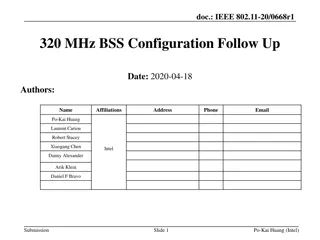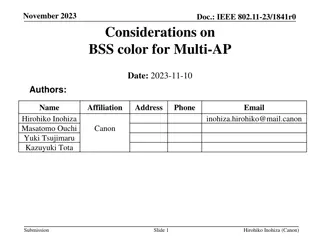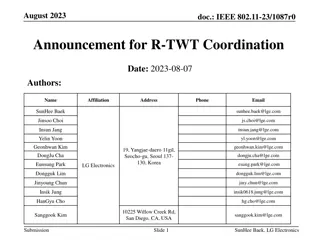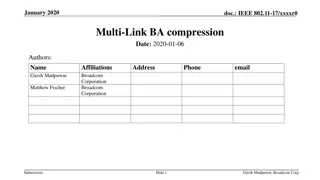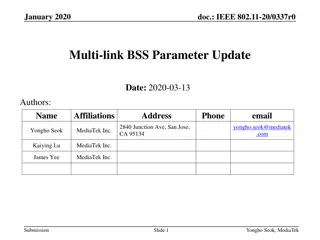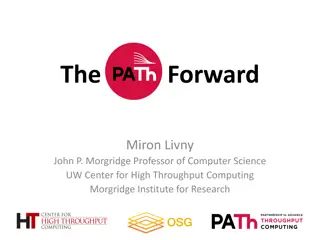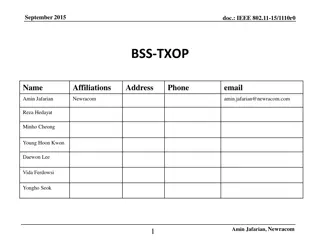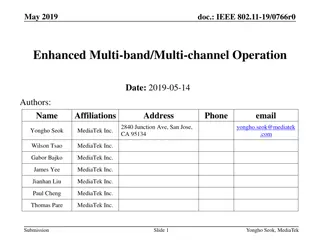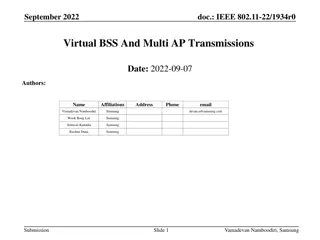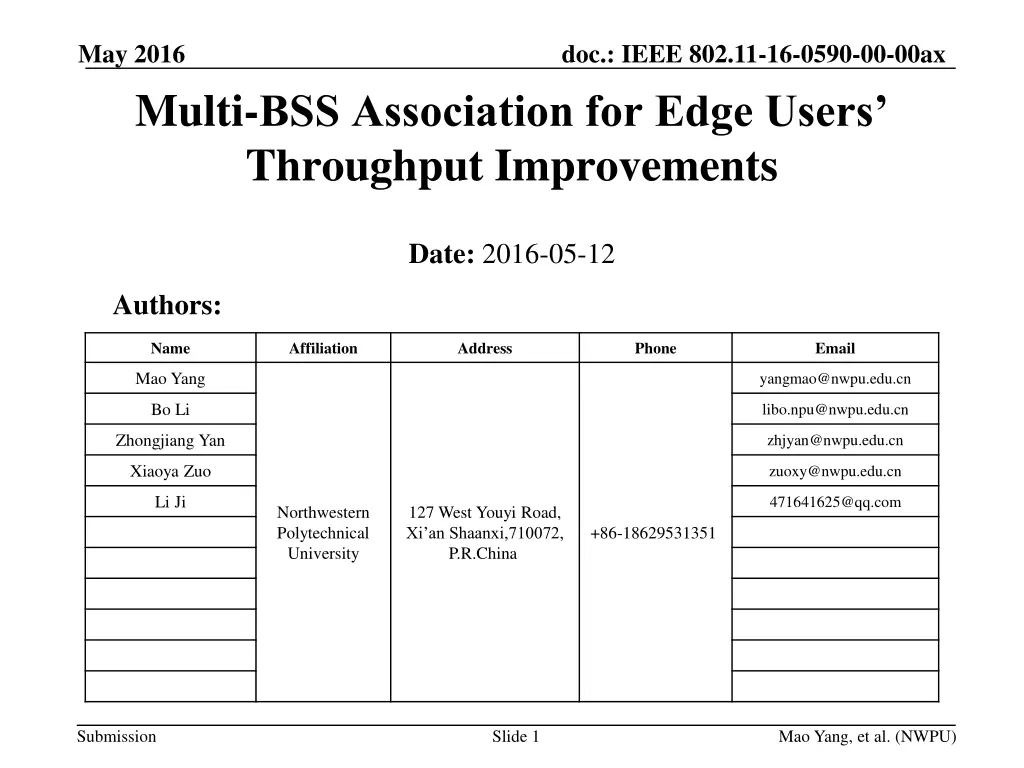
IEEE 802.11-16-0590-00-00ax Multi-BSS Association for Edge Users Throughput Improvements
"Learn about a proposed multi-BSS association scheme for enhancing edge users' throughput in IEEE WLAN. The innovative approach allows for data transmission through multiple BSSs, benefiting quality of service and area throughput in high-density deployment scenarios."
Download Presentation

Please find below an Image/Link to download the presentation.
The content on the website is provided AS IS for your information and personal use only. It may not be sold, licensed, or shared on other websites without obtaining consent from the author. If you encounter any issues during the download, it is possible that the publisher has removed the file from their server.
You are allowed to download the files provided on this website for personal or commercial use, subject to the condition that they are used lawfully. All files are the property of their respective owners.
The content on the website is provided AS IS for your information and personal use only. It may not be sold, licensed, or shared on other websites without obtaining consent from the author.
E N D
Presentation Transcript
May 2016 doc.: IEEE 802.11-16-0590-00-00ax Multi-BSS Association for Edge Users Throughput Improvements Date: 2016-05-12 Authors: Name Affiliation Address Phone Email Mao Yang yangmao@nwpu.edu.cn Bo Li libo.npu@nwpu.edu.cn Zhongjiang Yan zhjyan@nwpu.edu.cn Xiaoya Zuo zuoxy@nwpu.edu.cn Li Ji 471641625@qq.com Northwestern Polytechnical University 127 West Youyi Road, Xi an Shaanxi,710072, P.R.China +86-18629531351 Submission Slide 1 Mao Yang, et al. (NWPU)
May 2016 doc.: IEEE 802.11-16-0590-00-00ax Background & Motivation To improve the edge users throughput is an important objective of IEEE WLAN, which directly affects quality of services and area throughput. The next generation WLAN has to face high dense deployment scenario. Therefore, edge users may probably hear signals from multiple BSSs. Edge users experience severe interference Why not allow them to transmit data through multiple BSSs? Submission Slide 2 Mao Yang, et al. (NWPU)
May 2016 doc.: IEEE 802.11-16-0590-00-00ax Multi-BSS Association Step 1: edge STA sends Multi-BSS Association Initiation frame (MA- INIT) to neighbor BSSs (secondary APs). Multiple BSSs may work in different channels. Step 2: secondary APs respond edge STA with ACK or NAK. MA- Req MA- Req Edge STA MA-Rpt Primary AP Secondary AP1 MA-Rpt- ACK Primary AP Channel 1 Edge STA MA-Req- ACK Secondary AP1 Channel 2 Secondary AP2 MA-Req- ACK Secondary AP2 Channel 3 Submission Slide 3 Mao Yang, et al. (NWPU)
May 2016 doc.: IEEE 802.11-16-0590-00-00ax Multi-BSS Association Step 3: edge STA sends Multi-BSS report frame (MA-Rpt) to the primary AP to feedback the multi-BSS results. Step 4: primary AP responds edge STA with ACK. MA- Req MA- Req Channel 1 Edge STA MA-Rpt Primary AP Secondary AP1 MA-Rpt- ACK Primary AP Channel 2 Edge STA MA-Req- ACK Secondary AP1 Channel 3 Secondary AP2 MA-Req- ACK Secondary AP2 Channel 4 Submission Slide 4 Mao Yang, et al. (NWPU)
May 2016 doc.: IEEE 802.11-16-0590-00-00ax Parallel Backoff Step 5: edge STA runs backoff procedures in multiple BSSs simultaneously, and accesses the BSS (channel) in which the backoff counter is first decreased to 0. Step 6: edge STA transmits data through the selected BSS. Edge STA RTS DATA Primary AP Secondary AP1 Edge STA Primary AP BO first backoff finishing Secondary AP1 BO CTS ACK Secondary AP2 Secondary AP2 BO Submission Slide 5 Mao Yang, et al. (NWPU)
May 2016 doc.: IEEE 802.11-16-0590-00-00ax Conclusion In this contribution, we propose a multi-BSS association scheme for edge users throughput improvements. The edge user initializes the multi-BSS handshakes and then runs backoff procedures in multiple BSSs simultaneously. Multi-BSS association benefit the edge users throughput and QoS. Submission Slide 6 Mao Yang, et al. (NWPU)



